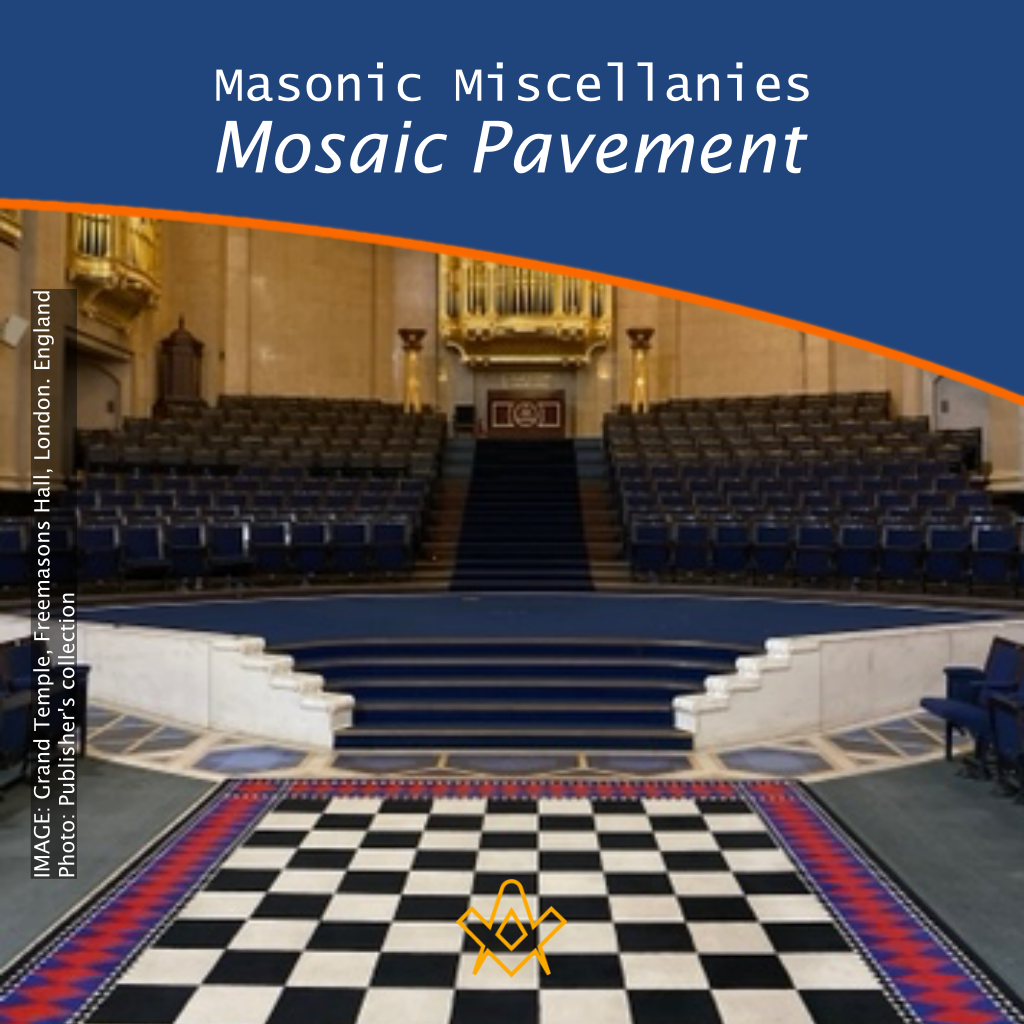The Mosaic Pavement – why mosaic, why pavement?
We are all familiar with the black and white chequered flooring of the Masonic lodge but where did it originate? There are a few theories…
The definition of ‘mosaic’ can mean two things [from the Cambridge Dictionary]:
1. a pattern or picture made using many small pieces of coloured stone or glass, or the activity or method of making these
2. a combination of many different parts forming one thing
It is no doubt the second definition fits Freemasonry perfectly, and also the premise that the black and white of the floor is “emblematic of human life, chequered with good and evil”.
In the Entered Apprentice degree a plethora of symbolism is showered on the initiate and during that ceremony the floor represents that of King Solomon’s Temple.
Duality, the symbolism of opposites is something that is prominently reflected in Masonic teachings – dark and light, the sun and the moon, night and day – subduing our passions, studying our contradictory nature; these are the lessons which Masonry strives to teach us.
Texts of the eighteenth century have reference to the Masonic pavement as being related to Moses (mosaic legend), or King Solomon – the tiling on which the priest walked in the Temple.
In fact the floor of the Temple was recorded as being of wood – “And he built the walls of the house within with boards of cedar, both the floor of the house, and the walls of the ceiling: and he covered them on the inside with wood, and covered the floor of the house with planks of fir” (1 Kings 6:15 KJV).
Pritchard mentions the Mosaick pavement in “Masonry Dissected” (1730) as being both the floor of the lodge and the paving stones of the temple, but there is no concrete evidence to connect it to these origins.
A.C.F. Jackson, in “A Glossary of the Craft and Holy Royal Arch Rituals of Freemasonry” (Lewis Masonic, 2008) writes thus:
Mosaic, in the Edinburgh Register Ms 1696, and some other early Exps there is a “square pavement” as a “jewel of the lodge”.
The words Mosaick pavement appear in the Wilkinson Ms 1727 and MD 1730, as moveable jewels “for the master to draw his design upon”, thus suggesting some form of tracing board.
This seems reasonable and would fit in with the practise of the candidate obliterating the floor drawings after his initiation.
Something that continued certainly until 1779. A special squared carpet for lodge seems unlikely, while lodges use Taverns as their meeting places.
Thus, the question had the early mosaick pavement turned into the present lodge squared carpet is unsolved.
Several theories exist, but the present use of the latter seems to have started with Preston.
However, see FGC. 132 and Mackey. The word probably comes from the GK. Mouseton (the place consecrated to the nine muses). C Lat. Musa. Or mousa (muse) to mosaicus (a pavement of small stones in a pattern, Italian musaico. OF mosaique. To ME. No connection with Moses.
There is a further historical slant to the use of the Masonic term “Mosaic Pavement”. Albert G. Mackey explores this in his “Encyclopaedia of Freemasonry and its Kindred Sciences”:
Mosaic work consists properly of many little stones of different colors united together in patterns to imitate a painting.
It was much practiced among the Romans, who called it museum, whence the Italians get their musaico, the French their mosaique, and we our mosaics.
The idea that the work is derived from the fact that Moses used a pavement of colored stones in the tabernacle has been long since exploded by etymologists.
The Masonic tradition is that the floor of the Temple of Solomon was decorated with a mosaic pavement of black and white stones. There is no historical evidence to substantiate this statement.
Samuel Lee, however, in his diagram of the Temple, represents not only the floors of the building, but of all the outer courts, as covered with such a pavement.
The Masonic idea was perhaps first suggested by this passage in the Gospel of Saint John xix, 13, “When Pilate, therefore, heard that saying, he brought Jesus forth, and sat down in the judgment-seat in a place that is called the Pavement, but in the Hebrew, Gabbatha.”
The word here translated Pavement is in the original Lithostroton [Lithostrōtos lit.’stone pavement’, from lithos ‘stone’ and strōtos ‘covered’], the very word used by Pliny to denote a mosaic pavement.
The Greek word, as well as its Latin equivalent is used to denote a pavement formed of ornamental stones of various colors, precisely what is meant by a Mosaic Pavement.
There was, therefore, a part of the Temple which was decorated with a mosaic pavement. The Talmud informs us that there was such a pavement in the Conclave where the Grand Sanhedrin held its sessions.
By a little torsion of historical accuracy, the Freemasons have asserted that the ground floor of the Temple was a mosaic pavement, and hence as the Lodge is a representation of the Temple, that the floor of the Lodge should also be of the same pattern.
The mosaic pavement is an old symbol of the Order. It is met with in the earliest Rituals of the eighteenth century.
It is classed among the ornaments of the Lodge in combination with the indented tassel and the blazing star.
Its parti-colored stones of black and white have been readily and appropriately interpreted as symbols of the evil and good of human life.
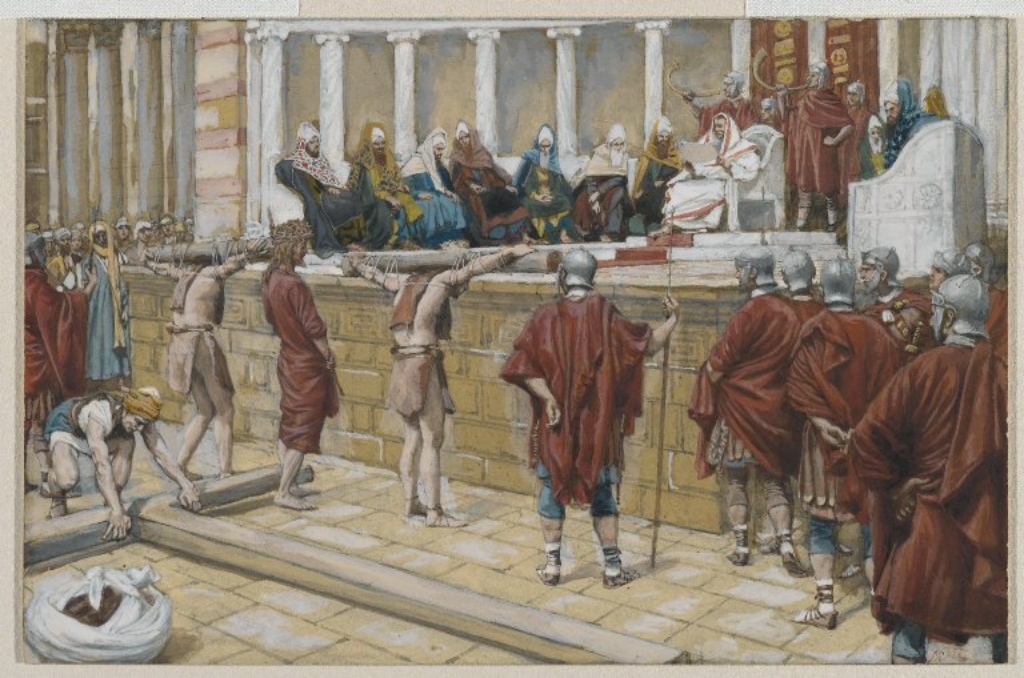
The Judgment on the Gabbatha by James Tissot, c. 1890. James Tissot – Online Collection of Brooklyn Museum
IMAGE LINKED: Brooklyn Museum Attribution 4.0 International (CC BY 4.0)
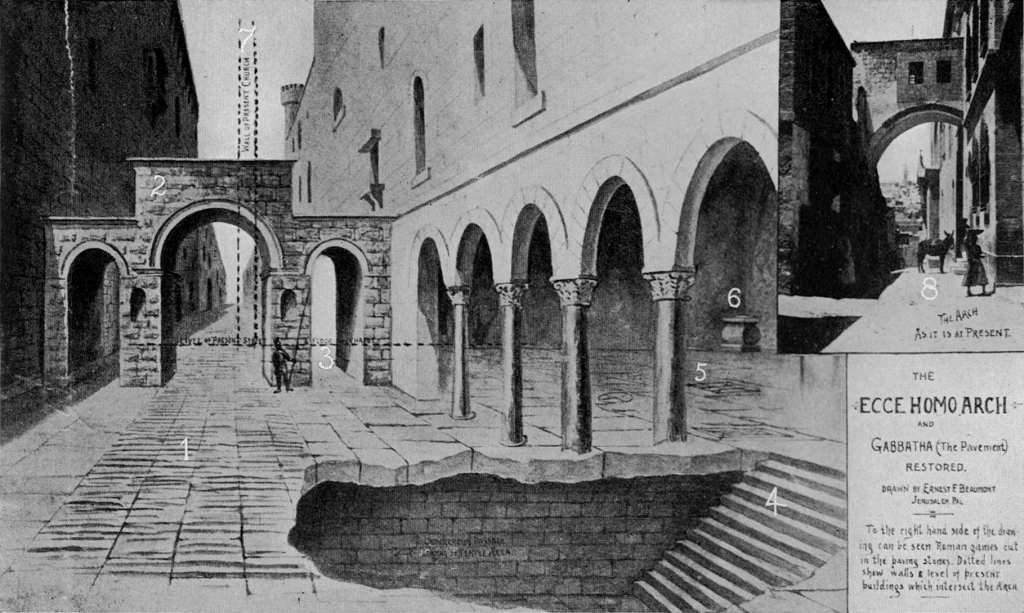
Depiction of the gateway of the eastern forum of Aelia Capitolina and original Roman pavement. The vertical lines show where the wall of the Convent of the Sisters of Zion currently extends. The horizontal line shows the modern street level. The stairs led to the Antonia Fortress. By Ernest F. Beaumont – Glimpses of Bible Lands: The Cruise of the Eight Hundred to Jerusalem,
IMAGE LINKED: wikimedia Attribution 4.0 International (CC BY 4.0)

Encyclopaedia of Freemasonry and its Kindred Sciences
By: Albert G Mackey
Volume one of two volumes. Albert Mackey’s “An Encyclopedia of Freemasonry” is one of the most significant and well-known of Masonic works.
Its usefulness and aid to Masonic students worldwide has been the cornerstone of its popularity since it was first published in 1873.
This photographic reproduction of the 1916 Edition was revised and expanded by William J. Hughan & Edward L. Hawkins and includes a 2015 Foreword by Michael R. Poll. This is a must-have work for all students of Freemasonry.

Masonry Dissected
By: Samuel Pritchard
This scarce antiquarian book is a facsimile reprint of the original. Due to its age, it may contain imperfections such as marks, notations, marginalia and flawed pages.
Because we believe this work is culturally important, we have made it available as part of our commitment for protecting, preserving, and promoting the world’s literature in affordable, high quality, modern editions that are true to the original work.
Recent Articles: Masonic Miscellanies
 Masonic Miscellanies - The Amulet of the Ladder Explore the cosmic significance of the Ladder in ancient Egyptian mythology through Wallis Budge's "Egyptian Magic." Discover how this profound symbol bridges the mortal and divine, encapsulating the Egyptians' fervent afterlife aspirations with a blend of myth, magic, and material culture. Dive into the celestial ascent of Osiris and mortal souls. |
 Masonic Miscellanies - Adulterine Gilds Guilds, the associations that shaped medieval European society, were more than just organizations of artisans and merchants. They played a vital role in the economic and social development of towns and cities. This exploration delves into the intriguing concept of adulterine gilds and their interconnectedness with guilds, offering insight into the significance of legal authorization and recognition in medieval Europe. |
 Masonic Miscellanies - Masonic Orb Discover the fascinating world of Masonic ball watch fobs, intricately crafted with tiny pyramids that form a cross when opened. These decorative accessories were all the rage in the late 1800s and early 1900s, and they still hold a certain allure today. Explore the different varieties and symbols found on these unique pieces that carry deep Masonic meaning. |
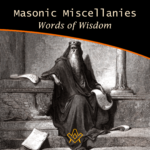 Masonic Miscellanies – Words of Wisdom Uncover timeless wisdom from King Solomon to Albert Pike in our latest Masonic Miscellanies, a treasure trove of insights for Masons. Journey through the ages and glean inspiring sayings, reflecting on their profound influence on Masonic principles. An enriching read for the enlightened. |
 Masonic Miscellanies - Symbolism of the Right Hand Unlock the enigmatic realm of Freemasonry as we delve into its age-old symbols, rituals, and philosophies. This thought-provoking exploration, drawn from Mackey's Revised Encyclopedia of Freemasonry, focuses on the iconic 'right hand' symbol - its rich history, universality, and profound significance. |
 Masonic Miscellanies - Order of the Secret Monitor Unveil the mystery of Freemasonry with 'The Order of the Secret Monitor'. Discover this lesser-known appendant order, its unique rituals, and the profound teachings it offers. Explore the bonds of friendship and brotherhood it fosters, all wrapped in an intriguing cloak of mystery. Your journey into the depths of Masonic wisdom begins here. |
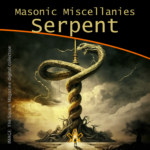 Masonic Miscellanies - The Symbol of the Serpent As a symbol, the serpent obtained a prominent place in all the ancient initiations and religions. |
 Masonic Miscellanies - The Four Veils in Royal Arch Masonry What are the four veils in Royal Arch Masonry? And what is the 'Ceremony of Passing the Veils'? Although common throughout Scotland, Ireland and the United States, it is mostly unknown in England, presently only worked in the Province of Bristol. ( and by dispensation ) |
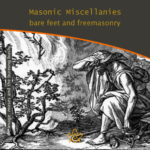 Masonic Miscellanies - Bare feet and Freemasonry A candidate for initiation into a Masonic Lodge often finds the requirements which he/she must fulfil somewhat odd. The mode of preparation often remains a puzzle, since the ritualistic explanation is not offered in full. Why are we 'slipshod' or "bare-footed" in Masonic Ritual? |
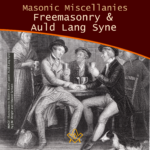 Masonic Miscellanies – Freemasonry and Auld Lang Syne Millions of people throughout the world will sing Auld Lang Syne to see out the Old Year. Few will know all the words, fewer still know what they mean, or that there is a link to Freemasonry. |
 Masonic Miscellanies - The Mosaic Pavement - why mosaic, why pavement? We are all familiar with the black and white chequered flooring of the Masonic lodge but where did it originate? There are a few theories… |
 Masonic Miscellanies – Masonic Master's Carpets Have you got a magic "Masonic Master's Carpet" in your lodge? I say 'magic' with my tongue firmly in my cheek because (as far as I know) these fabulous works of art don't bestow any mystical powers but can bestow some educational ones! However, considering their possible value today, they may magic up some interest (or funds). |
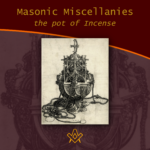 Masonic Miscellanies – The Pot of Incense Just when the pot of incense became an emblem of the third section of the Sublime Degree can not be stated with certainty. It is, apparently, an American invention or addition. But what does it symbolise? |
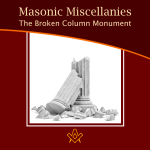 Masonic Miscellanies - The Broken Column Monument The story of the broken column was first illustrated by Amos Doolittle in the "True Masonic Chart" by Jeremy Cross, published in 1819. |
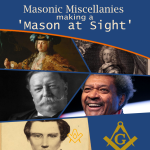 Masonic Miscellanies - Making a 'Mason at Sight' What does it mean to make a 'Mason at sight', and who was made one? |
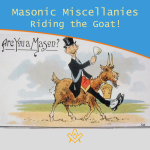 Masonic Miscellanies - Riding the Goat! Many Freemasons will have come across the phrase 'riding the goat', and will no doubt have been the butt of a joke about it (sorry, I couldn't resist!) But what does it mean and where did the phrase come from? |
 Masonic Miscellanies - What are the 'three dots'? Three dots or points in an upright triangular shape ∴ is most commonly known as the 'therefore' sign – so why is it used in Freemasonry? |
 Masonic Miscellanies - Keep Within Compass This month we discover a series of allegorical prints warning us to "Keep within Compass and you shall be sure, to avoid many troubles which others endure." |
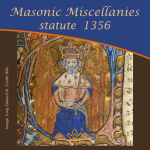 Masonic Miscellanies - statute 1356 Further to the reference in the article – The Builders - 6 - Free-Masons 'a statute was enacted against the Free-masons in 1356' – Regulations for masons who are hewers, on the one hand, and the light masons and setters on the other. |
 Masonic Miscellanies - An Anti-Masonic 'Apron'? The Anti-Masonic 'Apron' was created during the 1832 Presidential election in USA. It was not Ani-masonic. And it was not an apron. Read on to find out what and why it was created. |
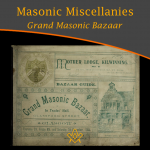 Masonic Miscellanies - Grand Masonic Bazaar (1895) Grand Masonic Bazaar (1895); to raise funds to clear the debt incurred by “Mother Kilwinning” in rebuilding their Lodge. |
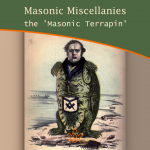 Masonic Miscellanies - the 'Masonic Terrapin' A satirical book from 1851 includes a bizarre caricature of a 'Masonic Terrapin' - all I can say is 'read on'… |
 Masonic Miscellanies - Masonic Bookplates You probably know what a bookplate is for, but did you know that the earliest known book mark/label dates from the reign of Amenhotep III in Egypt around 1391−1353 BCE?! |
 Masonic Miscellanies - Freemasonry & Bees Freemasonry & Bees - what's the buzz? The bee was among the Egyptians the symbol of an obedient people, because, says Horapollo, of all insects, the bee alone had a king. |
 Masonic Miscellanies - The mystery of the Tattooed Freemason In 1894, the body of a drowned man was found in the Bay of San Francisco - what they discovered was amazing. |
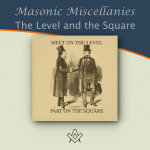 Masonic Miscellanies - The Level and the Square (A Poem) The Level and the Square (A Poem) - "We meet upon the Level, and we part upon the Square – |
 Masonic Miscellanies - The Mystic Tie What is the 'Mystic Tie'? Clue: it's not an item of neckwear! |
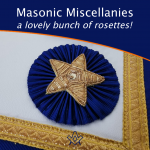 Masonic Miscellanies - A lovely bunch of rosettes! Where did the origin of the use of rosettes on Masonic aprons come from ? |
 Masonic Miscellanies - The Lodge of Sorrow The Lodge of Sorrow - Extracted General Ahiman Rezon, by Daniel Sickles, [1868] |
 Masonic Miscellanies - Memento Mori Memento Mori - a Masonic reminder to make your mark on the world |
 Masonic Miscellanies - A closer look at the Level and the Plumb-rule A closer look at the Level and the Plumb-rule |
 Masonic Miscellanies - The Symbolism of the Gloves The Symbolism of the Gloves and why Freemasons wear white gloves |
 Masonic Miscellanies - Will the real James Anderson please stand up? Will the real James Anderson please stand up? |
 Masonic Miscellanies - The Legend of the Third Degree The most important and significant of the legendary symbols of Freemasonry is, undoubtedly, that which relates to the fate of Hiram Abif. |
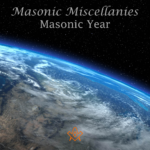 Masonic Miscellanies - Masonic Calendar Why do Freemasons use different 'years' to our regular calendar? |
 Masonic Miscellanies - What is a 'Lewis'? The English word 'Lewis' is a term belonging to operative Masonry, and signifies an iron cramp, which is inserted in a cavity prepared for the purpose in a large stone. |
 Masonic Miscellanies - From J.S.M. Ward Ever wondered why masons had to be 'free' or why we have a Tyler? |
masonic knowledge
to be a better citizen of the world
share the square with two brothers

click image to open email app on mobile device



